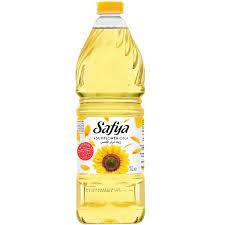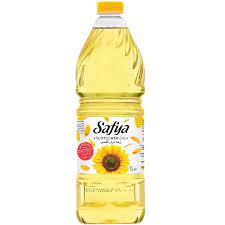sunflower oil price

Where to Buy Rapeseed Oil: A Guide to Finding High-Quality Options
June 24, 2023Sunflower oil Supplier
July 1, 2023Sunflower Oil Price: Factors Affecting Market Rates
Introduction: Sunflower oil is a widely consumed vegetable oil known for its light flavor, high smoking point, and various health benefits. If you’re a consumer or a business owner involved in the sunflower oil industry, understanding the factors that influence its price is crucial. In this article, we will delve into the key determinants of sunflower oil prices, explore the trends in the market, and provide valuable comparisons to help you make informed decisions. ORDER HERE

What Determines the Price of Sunflower Oil?
Sunflower oil prices are influenced by several factors, both internal and external to the industry. Let’s examine the primary determinants of sunflower oil prices:
- Supply and Demand Dynamics: The basic economic principle of supply and demand plays a significant role in setting sunflower oil prices. A shortage of sunflower seeds due to adverse weather conditions, pests, or diseases can lead to reduced oil production, causing prices to rise. Conversely, an oversupply of sunflower oil can lead to lower prices. Understanding the supply and demand dynamics is crucial in predicting price fluctuations.
- Global Oilseed Market: Sunflower oil is part of the broader oilseed market, which includes other oils like soybean, canola, and palm. Fluctuations in the prices of these oils can impact sunflower oil prices as well. Changes in global production, trade policies, or geopolitical events can cause shifts in the oilseed market, affecting the cost of sunflower oil.
- Currency Exchange Rates: Sunflower oil is traded internationally, and exchange rates between currencies can influence its price. If the currency in which sunflower oil is priced strengthens against other currencies, the price of sunflower oil may rise for buyers in those countries. Conversely, a weaker currency can lead to a decrease in sunflower oil prices.
Factors Influencing Sunflower Oil Price Fluctuations
- Climate and Agricultural Conditions: Sunflower cultivation heavily relies on favorable climatic conditions. Adverse weather patterns, such as droughts, floods, or hailstorms, can affect the yield and quality of sunflower seeds. Consequently, reduced supply can lead to increased prices.
- Government Policies and Regulations: Government policies and regulations related to agriculture, trade, and taxation can impact sunflower oil prices. Subsidies or incentives provided to sunflower farmers can affect production levels and, consequently, prices. Import and export tariffs, as well as trade agreements, can also influence the cost of sunflower oil.
- Energy and Fuel Prices: The sunflower oil industry relies on energy sources for cultivation, harvesting, processing, and transportation. Fluctuations in energy prices, such as the cost of fuel, electricity, or fertilizers, can impact the overall production costs of sunflower oil. Higher energy prices may lead to increased sunflower oil prices.
In conclusion, understanding the factors that affect sunflower oil prices is essential for consumers and businesses alike. Supply and demand dynamics, global oil

